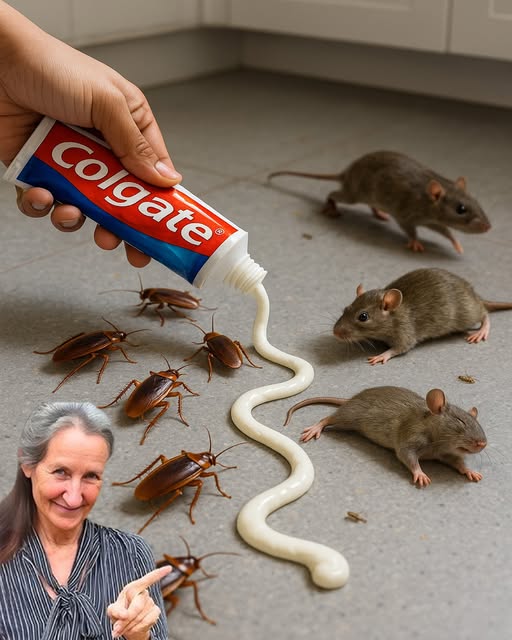Pest problems are an unwelcome nuisance in any home. From ants in the kitchen and cockroaches in the bathroom to mice sneaking into the pantry, these tiny intruders can create not just annoyance, but also health risks and hygiene issues. While most people reach for chemical sprays and traps, a growing number of homeowners are turning to an unexpected solution that’s already sitting in their bathroom cabinet: toothpaste. Believe it or not, this everyday product—especially the minty kind—is being used as a natural, affordable way to deter common household pests.

Pest control isn’t just about comfort—it’s essential for protecting your health and home. Rodents and insects can contaminate food, trigger allergies, and damage property. Cockroach droppings and mouse dander are known allergens, while ants can ruin food supplies and sneak into the smallest crevices. Mice are also notorious for chewing through wires and insulation, posing a fire hazard. Even if your house is clean, pests can still find their way in through cracks and gaps, especially during seasonal changes. This is where natural deterrents like toothpaste come into play.
Toothpaste might seem like an odd choice for pest control, but it contains several ingredients that insects and rodents find offensive. Peppermint oil or menthol—the same ingredients that give toothpaste its refreshing scent—are highly unpleasant to ants, roaches, and mice. The strong smell masks food scents that typically attract pests, and the paste’s sticky texture can act as a minor barrier. While toothpaste isn’t a complete replacement for traditional pest control, it can serve as a useful, short-term solution to keep unwanted guests away from specific areas.
If ants are the issue, toothpaste can help by disrupting the scent trails they rely on to locate food. Simply apply a thin line of mint toothpaste along their entry points—like windowsills, baseboards, or cracks in the wall. Reapply daily, especially after cleaning. For an extra boost, mix the toothpaste with baking soda and place it on small pieces of paper near the ant trails.
Cockroaches are another tough pest that detests strong smells. You can create a homemade repellent by mixing toothpaste with sugar and flour. Place small dabs on pieces of cardboard under sinks, behind the refrigerator, or near other problem areas. The sugar attracts them, while the scent of the toothpaste may discourage them from sticking around. Keep in mind that this method is a deterrent, not a killer—it’s more about prevention than elimination.
Mice, with their acute sense of smell, also tend to avoid peppermint and menthol. Applying mint toothpaste along baseboards, behind cabinets, and around suspected entry holes can help keep them at bay. To improve effectiveness, pair the toothpaste with physical barriers like steel wool to block access points. Refresh the toothpaste every few days to maintain its strength.
As with any household remedy, it’s important to use toothpaste safely. Avoid using large amounts where pets might lick it up—some brands contain xylitol, which is toxic to dogs. Don’t apply it on food surfaces or anywhere children might touch. Always treat toothpaste as a supplemental method rather than a permanent fix. For major infestations, professional pest control is still the best course of action.
In addition to toothpaste, other natural pest repellents can help you maintain a pest-free environment. A peppermint oil spray made by combining 10–15 drops of essential oil with water can be spritzed around baseboards and doorways. A 50/50 vinegar and water solution is great for wiping down ant-prone areas and disrupting their scent trails. Bay leaves or whole cloves can be left in cupboards to deter pantry bugs, and cucumber slices may help repel ants from certain areas.
Of course, knowing when to call in a professional is just as important as DIY efforts. If you consistently see pests during the day, hear strange noises at night, find droppings, or notice property damage, it’s time to consult an expert. Recurring infestations often signal a deeper problem—like hidden nests, moisture buildup, or structural gaps—that needs a more comprehensive solution.
In conclusion, while toothpaste may not replace your exterminator, it’s a clever, inexpensive tool for managing minor pest problems. Its strong aroma, accessibility, and ease of use make it a worthwhile addition to your home remedy toolkit. Combined with good housekeeping habits—like sealing food, closing entry points, and maintaining a clean environment—this surprising hack could help you take back your space from uninvited guests.
So why not give it a try? Swipe a bit of mint toothpaste along the trouble spots in your home and see if it makes a difference. And if it does, pass the tip along to a neighbor—it’s the kind of advice that’s too good to keep to yourself.





